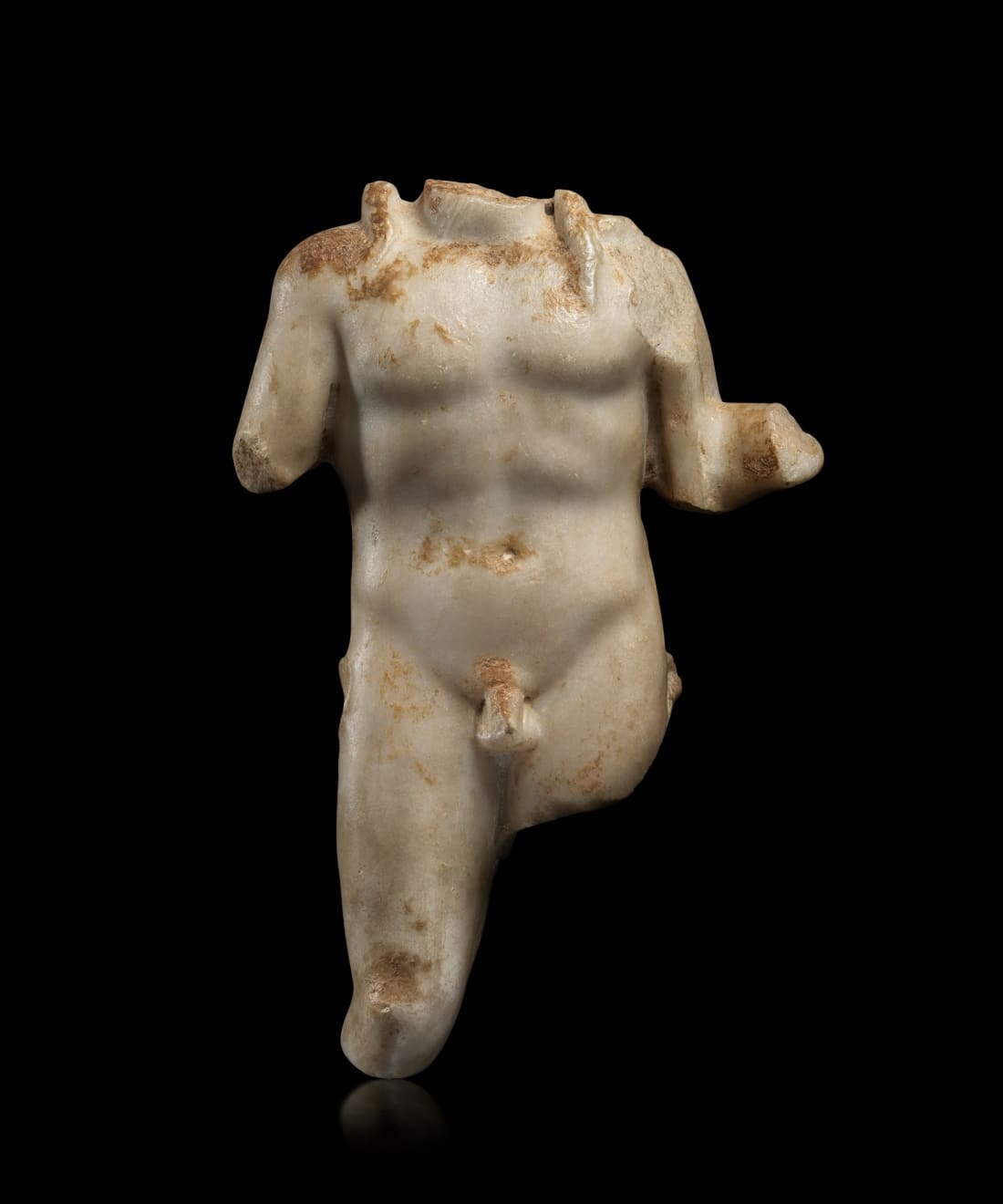Roman
Further images
Provenance
Hagop Kervorkian (1872 - 1962) Collection, New York, before 1921The Anderson Galleries, New York, 26 - 29 January, 1921, lot 145
With Ernest Brummer (1891 - 1964), New York, acquired from the above
Spink and Son, (Gallery Koller), Zurich, 16 - 19 October 1979, lot 637
Art market, London, 2005
Jacques Carré (1927 - 2015) Collection, Belgium, acquired form the above, thence by descent
As can be seen on the Brummer inventory card, the torso when originally sold in 1921 included the base, both legs, and a tree trunk, which according to the Brummer records, were lost in 1931.
Literature
The god is depicted standing nude, in contrapposto with the weight on one leg. His hair falls in curls on his shoulder and at the top of his neck. The position of the arms suggests that this may be a version of Apollo Kitharoidos, known from numerous Roman variations. The god would have been holding the kithara with his left arm, and the plectrum in his right hand, close to the “Apollo of Mantua” type, named for a lifesized marble statue now located in the city’s Palazzo Ducale. According to A. Furtwängler, the type is based on a now-lost Greek bronze attributed to Hegias, the teacher of Phidias (see pp. 49-53 in Masterpieces of Greek Sculpture).
Apollo was the Olympian god of prophecy and oracles, music, song, and poetry, as well as archery, healing, plague, and disease, and the protection of the young. In ancient Greek art he was depicted as a handsome, beardless youth with long hair, and was often depicted holding an attribute relating to his role. As the god of music, Apollo, as in this example, was often depicted playing his kithara, sometimes alongside the Muses, and such representations survive on vase-painting, frescos, and sculpture.
He was a popular subject in Roman art, with fine quality Roman period statues surviving in various sizes. For examples see, LIMC, II, 2, Apollo.





